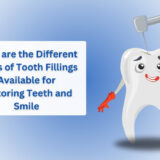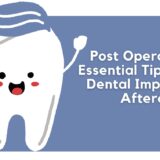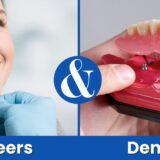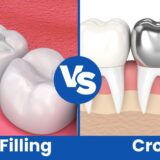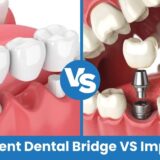Tooth extraction primarily depends upon factors like age, whether the situation is critical or okay, etc. and secondarily depends upon the patient whether he/she wants a stitches or an non-stitches procedure.
Whether it’s a stitch or a non-stitches procedure, post-extraction care has equal importance in both processes. It is important to keep cleaning the wound as the tiniest food particle may lead to infection.
Factors that might affect the decision of the patient
The decision of having stitches or a non-stitches tooth extraction might depend upon a few factors, which are as follows-
- Dentist’s expertise – The dentist’s experience and expertise play a vital role while deciding upon the procedure. His knowledge and expertise in understanding a patient’s situation need to be accurate during the treatment.
- Patient’s oral health – The patient’s oral health and hygiene is the primary factor depending on whether a dentist decides to opt for stitches or not.
- Patient’s age and preference – The patient’s age and preferences are the secondary factors that are also considered when deciding upon the procedure of tooth extraction.
Tooth extraction via Stitches Procedure
Tooth extraction via stitches procedure is a well-known dental practice that aims to ensure the patient receives maximum healing without any complications. Dental stitches are also known as Suture.
The process of extraction
The process of tooth extraction begins by numbing the gum by injecting anesthesia and then carefully loosening the tooth and cleaning the wound to avoid any infection. Then the dentist skillfully stitches the wound so that it heals properly and there are no chances of getting infected.
Types of stitches
At present, there are two types of stitches available for patients, these are-
- Absorbable stitches – These stitches get absorbed or dissolved by themselves within a few days. They make the process a bit hassle-free as the patients do not have to visit the dentists to get the stitches opened.
- Non-absorbable stitch – These stitches do not get absorbed or dissolved over time; the patient needs to visit a dentist to remove them. It is a bit long and time-consuming process.
How long a person’s stitches stay in after tooth extraction?
The period for which stitches stay in after extraction is usually 5-7 days but it might differ from patient to patient. It depends upon the after-extraction condition, the dentist’s advice, the time taken by the body to heal the wound, the type of stitches used i.e., absorbable or non-absorbable, etc.
Tooth extraction via Non-Stitches Procedure
Over time, every field has outgrown itself and so has the medical field. Now it is possible to get tooth extractions without any stitches. The wound gets healed without any stitches covering it.
The process of extraction
The procedure begins by numbing the gums by injecting anesthesia and then loosening the tooth from its gum area, and then cleaning the affected area to ensure no infection happens.
After cleaning the wound, a gauze pad is placed over it to stop the bleeding and to promote clot formation.
This process is also known for its natural healing process, where the wound is naturally healed via clot formation. Unlike the stitches process, no stitches are used in the process. This procedure is more comforting than the old stitches way.
Care after tooth extraction with stitches and without stitches
The patient should follow some essential steps regarding his oral health after the tooth extraction. Some of them are-
1.) In the case of care after tooth extraction with stitches – The patient needs to be very alert and take proper care of his wound to prevent infection and get maximum healing.
The patient should follow all the preventive measures his/her dentist gives. Patients should consume soft and liquidy texture food to apply less pressure to the jaw.
2.) In the case of care after tooth extraction without stitches – The patient who has opted for a non-stitches procedure should be very careful regarding his post-extraction recovery.
Patients should gently wash their mouths with warm water, as this help in pain relief. He/she should follow the dentist’s orders to recover faster.
Advantages and Disadvantages of the Procedures
In the case of stitches –
Advantages –
- The stitches over the wound provide a cover and have control over the gums, which helps in critical cases or when more than one tooth is extracted.
- Stitches help in stopping the blood flow in a better way as compared to non-stitches procedures.
- As stitches cover the wound, there are fewer chances of getting infected.
- Stitches help in healing the wound better as compared to non-stitches way.
Disadvantages –
- Stitches might cause uneasiness or discomfort and may even irritate the gums.
- Stitches procedures take more time as compared to non-stitches procedures and may be a cause of trouble for the patient.
- Non-absorbable stitches would require visiting the dentist again to remove the stitches as they would not get absorbed.
- The care after tooth extraction with stitches is more than that without stitches.
In the case of Non-stitches –
Advantages –
- The most advantageous point about this process is that it is faster, quicker, and less time-consuming than the stitches process.
- No stitches mean less irritation and discomfort.
- The process of clot formation ensures that the wound is completely healed.
- As there are stitches, there is no chance for food particles to get trapped, as they might cause infection.
Disadvantages –
- The healing process might differ from person to person as it is a natural process and depends on the patient’s health conditions.
- Non-stitches procedure needs more care and attention than stitches as the wound is open, and it might be risky if not cared for properly.
- The non-stitches process is unsuitable for every case; sometimes, stitches are the only option.
Conclusion
Tooth extraction is a small procedure but can be painful and infection-prone if not done or cared properly.
Where the stitches provide an outer covering to the wound, the non-stitches ensure complete healing without any discomfort. The stitches take time to dry up, whereas in a non-stitches way, the clot takes time to form and set.
The care after tooth extraction with stitches is as important as that of care after tooth extraction without stitches.
Both stitches and non-stitches procedures have their advantages and disadvantages. It depends upon the tooth’s condition, the dentist’s expertise, and the patient’s personal choice for deciding the extraction process.
FAQs
1. How to care after tooth extraction with stitches and without stitches?
A patient must follow the steps given below,
- Follow all preventive measures given by your dentist.
- Keep doing gargle warm water.
- Avoid hard food and consume liquid meals.
- Take your medicines on time.
- Ensure no food particles are left inside your mouth as it might cause infection.
2. What are the food items that should be consumed or avoided after extraction?
- After the tooth extraction, the patient may consume soft, healthy and liquid texture meals. Patients should avoid consuming hard or solid food items as it might create pressure on the wound. A few examples are-
- Patients can consume – smoothies, eggs, khichdi, yogurt, soups, etc.
- Patients should avoid – raw vegetables, chips, chocolates, beer, alcohol, etc.
3. How long do stitches stay in after tooth extraction?
- The period for stitches is usually 5-7 days but it depends upon a few points, such as:
- After-extraction condition.
- The dentist’s advice.
- The time taken by the body in healing the wound.
- The type of stitches used i.e., absorbable or non-absorbable, etc.

